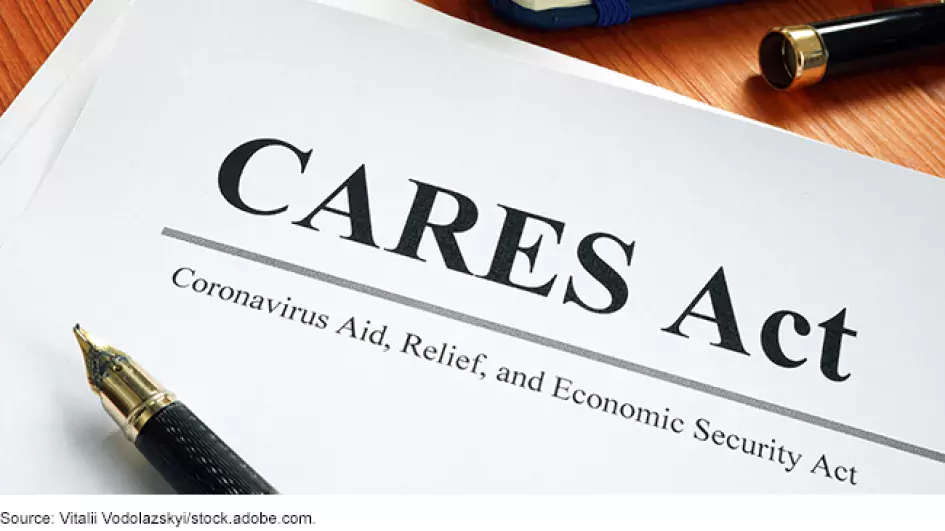Our Latest Report on COVID-19 Includes 15 New Recommendations to Improve Federal Efforts
As the pandemic enters its third year, the nation continues to face challenges related to COVID’s health and economic impacts, including rising inflation and ongoing supply chain disruptions.
Since March 2020, we have followed the federal response to COVID-19. Today, we issue our 10th comprehensive report on this response.
Image

“While we have seen some progress, the country still needs to focus on both the remaining public health and economic implications of the pandemic. Our recommendations are intended to address these remaining challenges,” said Gene L. Dodaro, Comptroller General of the United States and head of the GAO. “It is important that federal agencies continue to implement GAO’s COVID recommendations to improve the overall government response moving forward.”
Today’s WatchBlog post looks at our latest report. In this report, we make 15 new recommendations for federal agencies and raise one new matter for congressional consideration to make improvements in these and other areas:
Federal payment errors in COVID-19 programs
To respond to the pandemic, trillions of taxpayer dollars have been spent on a wide range of activities, including individual economic relief checks, loans to struggling small businesses, payments to localities, and more.
Funding was made available quickly in an effort to respond to the pandemic. However, because of this speed, payment errors posed a risk. These errors—known as ‘improper payments’—are those payments that should not have been made or were made for an incorrect amount. Federal agencies are required to submit data about improper payments to the Office of Management and Budget (OMB). This information is then reported on PaymentAccuracy.gov.
When new programs are created, including those in response to COVID-19, OMB guidance requires that federal agencies complete a risk assessment following the first 12 months of program operations to determine whether a program may be at risk for significant improper payments and take corrective actions. However, for COVID programs, this could mean that new programs may have disbursed most—or even all—COVID-19 funds before an assessment or action was taken.
In response to this concern, we suggested in November 2020 that Congress consider designating all executive agency programs and activities making more than $100 million in payments from COVID-19 relief funds as immediately “susceptible to significant improper payments,” bypassing the 12-month wait before beginning to develop an estimate and taking corrective actions. We reiterated our concern and suggestion in our March 2022 testimony.
In our latest report, we are also making one new recommendation that OMB require agencies to certify the reliability of data that they submit to PaymentAccuracy.gov.
Critical manufacturing and cybersecurity
Some industries and manufacturers are so important to our everyday lives and safety that they are deemed part of the Critical Manufacturing Sector, one of 16 critical infrastructure sectors designated for protection by the federal government. Critical manufacturers include a range of organizations, from producers of iron and steel to transportation equipment.
Due to the pandemic, the Critical Manufacturing Sector has faced delays in shipments of goods, worker shortages, and increased cybersecurity vulnerability in critical infrastructure systems and assets.
The Cybersecurity and Infrastructure Security Agency (CISA) leads federal coordination efforts to secure the Critical Manufacturing Sector and took steps to respond to the pandemic’s impacts. For example, CISA developed voluntary guidance to help jurisdictions and critical infrastructure owners and operators identify essential work functions and ensure that the workers who performed those functions could continue accessing their workplaces when restrictions, such as stay-at-home orders, were in place in their communities.
Members of the Critical Manufacturing Sector have identified a lessons-learned analysis as a high-priority need, and CISA has collected some information on the pandemic’s impacts on the sector that could be used in a lessons-learned analysis. However, as of February 2022, CISA had not finalized a plan for developing the analysis. In our new report, we are recommending that CISA do so.
Improving public health data collection
The pandemic highlighted inadequacies in both the data that the Centers for Disease Control and Prevention (CDC) collects and in the public health surveillance systems CDC uses for monitoring the spread of infection and disease progression across the population.
Both the CARES Act and the American Rescue Plan Act (ARPA) provided funding to the CDC to support modernizing public health surveillance infrastructure.
CDC’s Data Modernization Initiative, launched in 2020, aims to improve data collection, information sharing, and surveillance to prepare for future public health threats. However, the agency has not outlined specific actions, time frames, or the allocation of roles and responsibilities needed to achieve those future objectives.
In our new report, we are recommending that the CDC define specific action steps and time frames for the agency’s data modernization efforts.
Find out more
Today’s blog post highlights some, but not all, of our findings from our latest report. With this latest report, GAO’s oversight of COVID-19 relief has produced 279 recommendations—61 of which have been fully implemented—and raised 15 matters for congressional consideration.
To learn more, visit our featured topic page about following the federal response to COVID-19.
- Comments on GAO’s WatchBlog? Contact blog@gao.gov
GAO Contacts
Related Products

GAO's mission is to provide Congress with fact-based, nonpartisan information that can help improve federal government performance and ensure accountability for the benefit of the American people. GAO launched its WatchBlog in January, 2014, as part of its continuing effort to reach its audiences—Congress and the American people—where they are currently looking for information.
The blog format allows GAO to provide a little more context about its work than it can offer on its other social media platforms. Posts will tie GAO work to current events and the news; show how GAO’s work is affecting agencies or legislation; highlight reports, testimonies, and issue areas where GAO does work; and provide information about GAO itself, among other things.
Please send any feedback on GAO's WatchBlog to blog@gao.gov.




